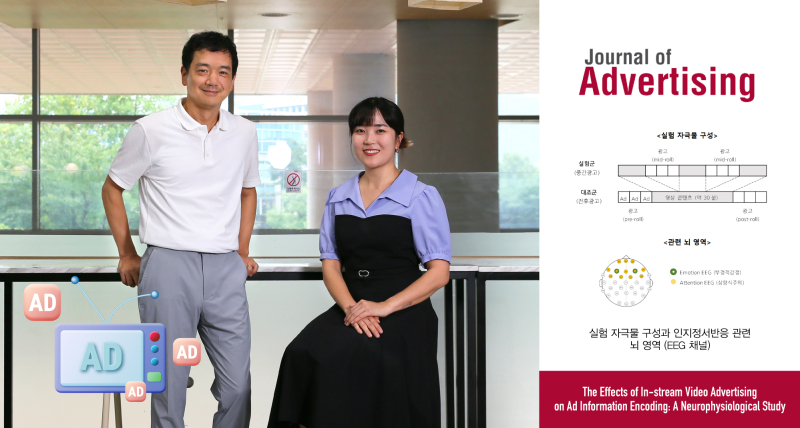The effects of in-stream video advertising on ad information encoding have long remained a mystery. A recent study, led by Professor Sung-Phil Kim and his research team in the Department of Biomedical Engineering at UNIST sheds light on this subject. By integrating the negative emotion–memory model (NEMM) and the limited capacity model of motivated–mediated message processing (LC4MP), researchers investigated how advertising content is encoded within the context of in-stream video advertising.
The study involved comparing two groups: One exposed to mid-roll ads and those exposed to pre- and post-roll ads. Through electroencephalography (EEG) analysis, which measures brainwave activity, the research team assessed negative emotions and bottom-up attention during advertisement viewing.
Findings from the study indicate that while viewers experienced initial negative emotions induced by mid-roll ads, these feelings were attenuated with subsequent mid-roll exposures. Interestingly, negative emotions resulting from mid-roll ads reduced the influence of bottom-up attention in information encoding. Conversely, pre- and post-roll ads did not elicit negative emotions; thus, bottom-up attention played a significant role in encoding information from these types of advertisements.
Furthermore, despite experiencing transient negative reactions during mid-roll exposures, viewers’ purchase intention for advertised products remained unaffected—an important insight for advertisers seeking to understand consumer behavior.
“This research provides valuable insights into how intermediate advertisements impact memory formation,” explained Professor Kim. “Understanding how negative emotions influence memorability can enhance advertising effectiveness and revenue generation.”

Figure 1. (A) Experimental protocol in the first session of the experiment and (B) EEG channels involved in emotion and attention process.
By analyzing EEG data related to remembering and emotionally responding to advertisement content presented during video viewing sessions, this study contributes to a deeper understanding of the cognitive processes involved in ad information encoding.
Dr. Seungji Lee, the first author of the study, emphasized that “the negative emotions experienced by viewers during mid-roll ads did not extend to affect their perception or desire to purchase advertised products.” This insight highlights that although negative emotions play a role in memory formation, they do not impact consumers’ inclination towards purchasing the advertised items.
The research team also examined viewer interest in video content alongside advertisements and found no statistically significant difference between the experimental group (exposed to mid-roll ads) and the control group (not interrupted by ads). These findings suggest that intermediate advertisements evoke negative emotions among viewers without affecting their overall engagement with video content or altering perceptions of the inserted advertisements themselves.
“This study has implications for companies seeking to enhance advertising effectiveness and profitability,” noted Dr. Lee. “It can serve as a foundation for developing regulations and policies related to responsible use of intermediate advertisements.”
Professor Jooyoung Kim from the University of Georgia, who jointly participated in this study, highlighted how these research findings could inform streaming platforms, such as YouTube or Netflix Standard With Ads when setting advertising costs based on ad placement within videos.
The results of this groundbreaking research were published online on July 20th in the Journal of Advertising. The study was conducted through support from the Korea University Smart Media Research Center, funded by the Ministry of Science and ICT, along with assistance from the Super Convergence AI Source Technology Development Project, supported by the National Research Foundation of Korea (NRF).
Journal Reference
Seungji Lee, Jooyoung Kim, Glenna L. Read, and Sung-Phil Kim, “The Effects of In-Stream Video Advertising on Ad Information Encoding: A Neurophysiological Study,” Journal of Advertising, (2023).














